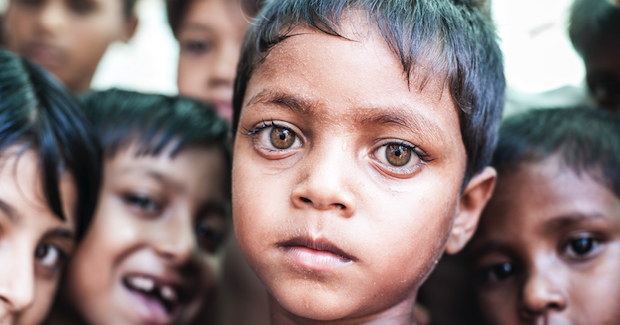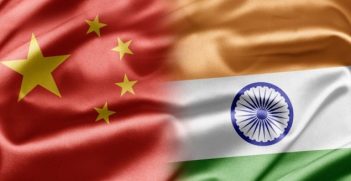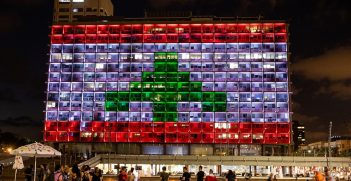Deafening Silence on Myanmar's Rohingya

The UN Special Rapporteur to Myanmar, Yanghee Lee, has been visiting Rohingya refugee camps in Bangladesh this week, gathering more evidence of recent unprecedented violence against the Muslim minority. However, ahead of Lee’s report to the UN Human Rights Council next month, sympathy towards the Rohingya in Myanmar remains scarce.
It has been over three months since Myanmar’s military began its latest crackdown on the persecuted Rohingya Muslim minority in western Myanmar. Since humanitarian agencies and media have been largely barred from the conflict area, it has been easy for sceptics to deny alleged abuses by Myanmar’s military in those areas. A new report released on 3 February by the UN Office of the High Commissioner on Human Rights (OHCHR) makes these abuses much harder to deny. Based on interviews with refugees in Bangladesh, the report found that crimes against humanity had likely been committed.
The recent crackdown followed a 9 October 2016 attack on police camps by an insurgency formed from the Rohingya community. The band of some 300 men, armed with sticks, knives and a few firearms, killed several police officers. They have since posted videos online, identifying themselves under the name Harakah al-Yaqin, or “Faith Movement”. This was the first manifestation of violent Rohingya insurgency in Rakhine State since the early 1990s. The military has responded brutally and disproportionally, in a collective punishment of the entire Rohingya community. Senior UN officials suggest that over 1,000 people have been killed. Some 70,000 refugees have arrived in Bangladesh, mostly women, children and the elderly. Refugees report that men had been collected by the military and taken away. The families fear they have been killed. Over half of the women interviewed by the OHCHR had experienced sexual violence, including children who had been raped.
Operations such as these have occurred periodically, in 1978 and 1991-92 the military destroyed villages and drove hundreds of thousands into Bangladesh. More recently in 2012, security forces committed abuses against Muslim civilians during communal violence involving Rakhine Buddhists which displaced 140,000 and sparked a regional refugee crisis.
Myanmar’s newly elected democratic leaders have been generally uninterested in the suffering and abuses against this vulnerable population. Only after the release of the recent report did the government express concern and stress the need for more information. Low levels of interest by the government reflect how the Rohingya are perceived by the Myanmar public.
Ethnic and religious predispositions
The Muslim Rohingya number approximately one million and are commonly believed to be illegal immigrants, concentrated in the northern townships of Rakhine State—bordering Bangladesh. They are known as ‘Bengali’ in Myanmar; the state denies them recognition as a ‘national race’ and, by extension, citizenship. Their opportunities for education, access to services and even freedom of travel between villages have long been severely restricted. The Rohingya community, however, view themselves as Myanmar people, claim deep roots in Rakhine state and speak Rakhine or Burmese languages.
In Myanmar today, there is doubtless prejudice and fear towards the Rohingya population particularly, and Muslims generally. While there is no record of serious division between communities before colonisation, Muslims did hold influential positions in the royal courts of the Burmese and Arakanese (Rakhine) kingdoms. The 19th century King Mindon even fostered co-existence and constructed a hostel in Mecca for Burmese Muslims completing the Hajj.
The earliest source of today’s sentiments can perhaps be traced to the colonial period, when many South Asians migrated to Burma and dominated administrative, economic and social life. From the 1920s, the nationalist movement took advantage of the discontent against immigrants to challenge British rule. A rallying call of the movement became “to be Burmese is to be Buddhist”.
Despite tensions between Buddhists and new immigrants from South Asia, Indians in Myanmar reported good relations with their neighbours after 1948. The discontent with religious minorities today has grown in large part from government policy. The politicisation of religion and citizenship has been reinforced by subsequent governments, deliberately or otherwise. When the military took power in 1962, all businesses were nationalised forcing 300,000 people—most of them Indian—to leave the country. Muslims and other minorities were prohibited from rising through the ranks of the military and bureaucracy. The rhetoric has often been discriminatory. In 2009, Myanmar’s senior official in Hong Kong described the Rohingya as “as ugly as ogres.”
Under the more recent quasi-civilian government of President U Thein Sein (2011-2016), the situation deteriorated for Muslims. The political transition fostered a growing Buddhist nationalism and violence against Muslims. This movement was implicitly—and sometimes explicitly—supported by the government. After the 2012 violence in Rakhine state, the President proposed sending displaced Muslims to a third country.
Stoking the flames
The military and nationalist movements have been effective at framing the Rohingya issue to reinforce existing sentiments, cultivated by various administrations.
A notorious example of how these sentiments are kept alive today is U Wirathu, a leader of the Organisation for the Protection of Race and Religion (MaBaTha)—the most well-known Buddhist nationalist organisation. He has described Muslims as “mad dogs,” who “breed quickly,” are “very violent” and “eat their own kind”. His Facebook page is constantly updated with details of “Muslim” atrocities, including murders and bomb attacks but predominantly rape, which he claims is being used in an attack on Myanmar’s population. He was endorsed by then President Thein Sein, and has a strong following of monks and laypeople who share his views. In 2012, a group of 300 monks assembled at the Shwedagon Pagoda in Yangon to pray for the victims in Rakhine. Homemade signs were seen amongst the crowd with slogans such as “defend Rakhine State” and “kick out the Bengali terrorists”.
There is also an international aspect to the domestic sentiments and Myanmar Muslims have been accused of having ties to terrorist organisations. As early as the 1978 crackdown on Rohingya, the government alleged that it was responding to the threat of Muslim extremism, evoking existing fears. The Rohingya community as a whole is treated as a threat, legitimating the crackdown and collective punishment.
The reaction of civil society and the public at large has largely been mute. While some are willing to criticise divisive nationalism, most are fearful of putting their name to their criticism.
Complicit leadership
The lack of public interest in the Rohingya issue has given political leaders little incentive to prioritise the problems in northern Rakhine State. To the disappointment of many of her supporters abroad, Nobel Peace Prize Laureate and Myanmar State Counsellor, Aung San Suu Kyi, has been largely silent on the latest violence. When she has spoken, her statements have reinforced existing prejudice. In December, her office rejected rape allegations as “fake rape”. There is no indication she intends to use her moral leadership to relieve tensions in Rakhine.
Domestically, military and government elites have been successful in their framing of the recent Rakhine violence. Historically, recurrent questions regarding the boundaries of the Myanmar nation-state and who belongs within them have again been raised during the political transition. The division—bred over decades—is again being harvested to support an exclusive imagining of Myanmar. There is now little space for discussing solutions in Rakhine state and even less to gain from them for those in power. As evidence of atrocities continues to mount, however, silence and inaction are increasingly suggesting complicity.
James T. Davies is a PhD candidate at UNSW ADFA. He recently undertook fieldwork in Myanmar related to political change and communal violence.
This article is published under a Creative Commons Licence and may be republished with attribution.





